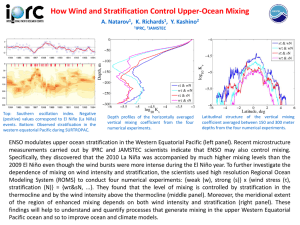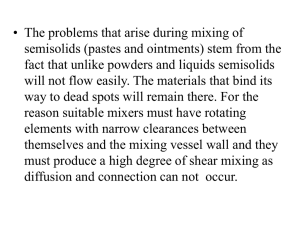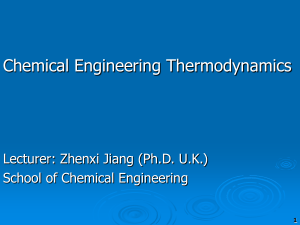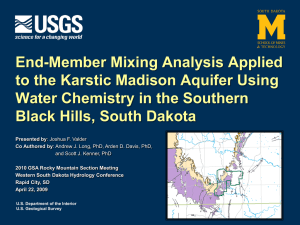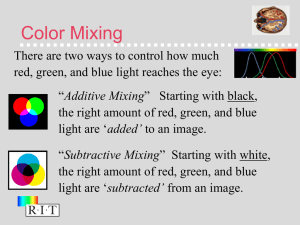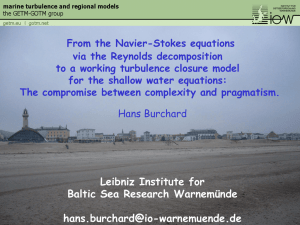LINE MIXING EFF ND WITH PHOTOACOUSTIC
advertisement
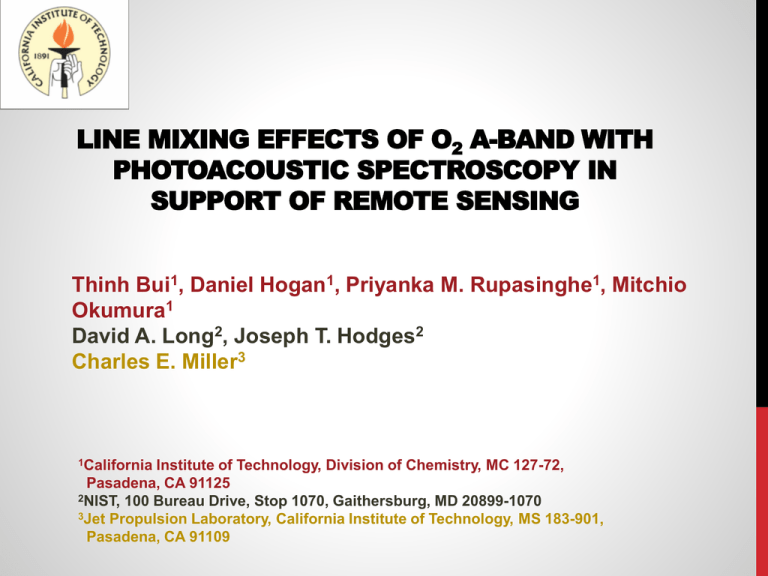
LINE MIXING EFFECTS OF O2 A-BAND WITH PHOTOACOUSTIC SPECTROSCOPY IN SUPPORT OF REMOTE SENSING Thinh Bui1, Daniel Hogan1, Priyanka M. Rupasinghe1, Mitchio Okumura1 David A. Long2, Joseph T. Hodges2 Charles E. Miller3 1California Institute of Technology, Division of Chemistry, MC 127-72, Pasadena, CA 91125 2NIST, 100 Bureau Drive, Stop 1070, Gaithersburg, MD 20899-1070 3Jet Propulsion Laboratory, California Institute of Technology, MS 183-901, Pasadena, CA 91109 OUTLINE Motivation Collisional line mixing Photoacoustic spectroscopy (PAS) Data/Analysis Summary MOTIVATION http://oco.jpl.nasa.gov/ In order to control rapidly growing atmospheric CO2 concentration around the world NASA’s future OCO-2 mission will monitor global atmospheric CO2 from space. As a precession requirement, this space based remote sensing mission must monitor the global atmospheric CO2 with an unprecedented accuracy of 0.25%. MOTIVATION CONT. http://oco.jpl.nasa.gov/ To minimize systematic uncertainties OCO-2 will measure column averaged CO2 dry-air mole fraction (XCO2) as defined by, X CO 2 N CO 2 N O2 [O 2 ] where , [ O 2 ] 0 . 2095 This requires absorption line shape parameters of O2 and CO2 to be known with 0.1% accuracy. MOTIVATION CONT. However, as of today, the current knowledge of these parameters (widths, shifts…) with this accuracy is very limited or not known. In order to achieve this goal an accurate modeling of data will be required including line mixing as well as other non-Voigt features, collision induced absorption (CIA), Dicke narrowing and speed dependence (SD). In this talk we will present our effort to measure line mixing effect in O2 A-band using photoacoustic spectroscopy. OUTLINE Motivation Collisional line mixing COLLISIONAL LINE MIXING (A) Low pressure regime At low pressures, lines can be considered as isolated each other. COLLISIONAL LINE MIXING (B) High pressure regime The resulting spectrum can not be considered as a superposition of two isolated lines due the population exchange. COLLISIONAL LINE MIXING ( ): Predictions made with the inclusion of line mixing ( ---- ): Predictions made without the line mixing Pressure Typical evolution of the line shape of a doublet of collisionally coupled transitions with increasing pressure. Collisional effects on molecular spectra: laboratory experiments and models, consequences for applications / Jean-Michel Hartmann, Christian Boulet, Daniel Robert. Amsterdam; Boston: Elsevier Science, 2008 OUTLINE Motivation Collisional line mixing Photoacoustic spectroscopy (PAS) PHOTOACOUSTIC SPECTROSCOPY (PAS) Why PAS? Compared to direct absorption spectroscopy, this method is benefited by zero background measurement. Optically broadband devices (acoustic properties of the system do not depend on the spectral distribution of the absorbed radiation). High precision (0.01%), high resolution (200 MHz) and a large dynamic range (Unsaturated lines for (0.1 – 5 atm)). PHOTOACOUSTIC SPECTROMETER f Optical transition vfi + vmod P i A non-radiative de-excitation mechanism is considered. Absorbed photon energy is released via translational energy by increasing the temperature (heating). The heat dissipation to the surrounding environment creates a pressure wave. When the laser is modulated, this pressure variation is also periodic and results a acoustic wave. This acoustic wave can be detected by using a sensitive microphone. PAS SPECTROMETER AT CALTECH K.A.Gillis et al. Rev. Sci. Instrum. 81, 064902 (2010) In order to reduce background noise the spectrometer is located at sound proof environment. EXPERIMENTAL SETUP Preamp Lock-in Amp PD Mic. PAS cell 400 mW 50 mW Diode Laser FG 800 mW AOM Amp. WM AOM Driver 1.6 kHz OUTLINE Motivation Collisional line mixing Photoacoustic spectroscopy Data/Analysis A P-BRANCH DOUBLET FITTED WITH GALATRY PROFILE (NO LINE MIXING) Spectrum S/N > 10 000, Fitted S/N ~ 600 SAME DOUBLET FITTED WITH GALATRY PROFILE (PAIRWISE LINE MIXING IS INCLUDED) A.U Pressure = 4 atm Spectrum S/N > 10 000, Fitted S/N ~ 1325 Still not close to spectrum S/N ?? A CLOSER LOOK: Pairwise line mixing approximation is no longer valid. This is a limitation of our current data analysis software Solution: Multi-spectrum fit with line mixing is required! RECENT DATA: O2 A-BAND @ 4 ATM ( a g X g ( 0 , 0 )) 1 3 R-branch A.U P-branch Not only line mixing but also CIA is clearly visible. OUTLINE Motivation Collisional line mixing Photoacoustic spectroscopy (PAS) Data/Analysis Summary SUMMARY We have utilized a photoacoustic spectrometer for O2 A-band at 760 nm to meet precision requirements of current (ACOS/GOSAT/TCCON) and future (OCO-2/OCO-3/ASCENDS) remote sensing applications. This can be used to study line mixing effect as well as collision induced absorption for remote sensing relevant pressures (0.1-5 atm). In order to fit the spectra at relatively high pressures, more complete line mixing model must be included in the fitting procedure. ACKNOWLEDGMENT This work was performed at California Institute of Technology, and was supported by NASA’s Jet Propulsion Laboratory at Caltech and NSF Graduate Fellowship program.

